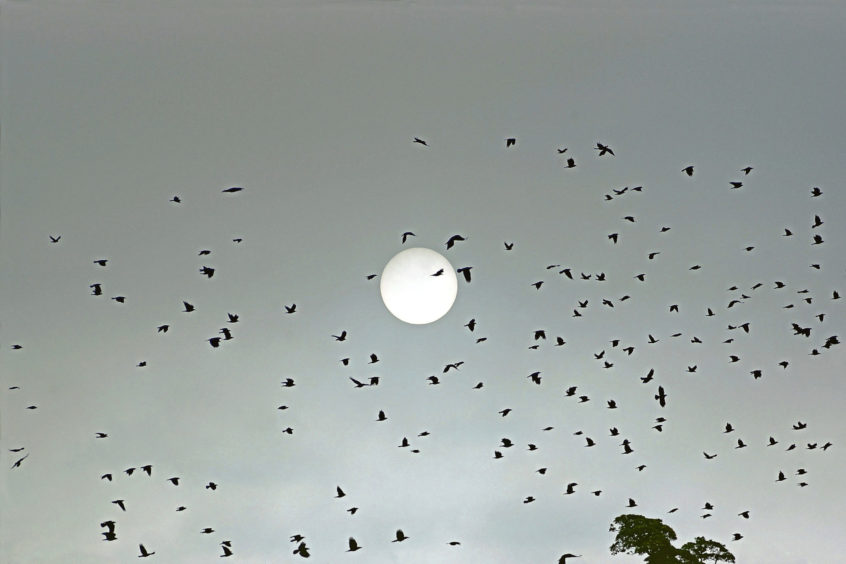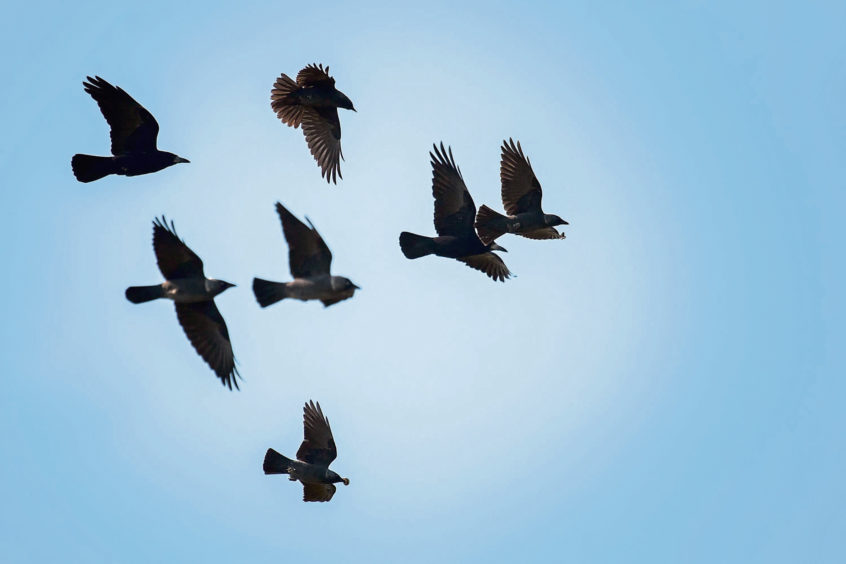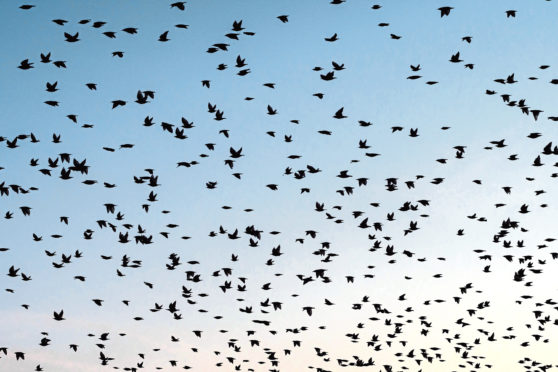The soft cloak of dusk gathers under the fading sky and the gentle warble of a robin briefly drifts across the damp air.
Then, a swirling in the heavens above me, as a small group of rooks and jackdaws swooped and swerved in an aerial jig. More birds suddenly appeared as if on the behest of some unknown cue, and within seconds, the sky had become thick with masses of rooks and jackdaws excitedly calling.
On dark bat-like wings, they swept over the strath, and one large group of birds broke away from the others and tumbled in the air, rising and falling together as if suspended on puppeteer strings.
On the far side of the strath lies a wooded ridge, and this wheeling flock veered across to it, the air full of their excited high-pitched calls, sneezes, and snorts. This is their traditional roost site, and they fall rapidly towards it, twisting and turning with wings half closed. For another few minutes, the restless calling and socialising continued, then like the extinguishing of a flame, the air fell silent.
As they settled, I pulled up my jacket collar and headed for home, my mind buzzing with wonderment at what I had just seen.

For me, these dusk and dawn gatherings of rooks and jackdaws are one of nature’s greatest winter spectacles. Both are intelligent birds, and whenever I watch these socialisations, I always get the impression they are enjoying themselves and revelling in the company of their own kind.
There is a social hierarchy amongst rooks in their autumnal and winter roosting sites, with the dominant birds settling on the higher branches, which makes me wonder whether jackdaws roost even lower down given their smaller size. And do they also have their own pecking order?
Flocking together at this time of year brings several advantages; birds can work together to find food, there is safety in numbers from predators, and once in the roost, warmth can be generated by being together.

I suspect there are also social benefits, perhaps helping to reinforce pair bonds. Research has discovered that birds prefer to fly close to members of their own species in these mixed flocks, and that the larger and more dominant rooks take the lead by flying near the front of flocks. Additionally, the lifelong, monogamous pair bonds that are characteristic of both species seem to be reflected in flight, as birds often fly particularly close to a single, same-species partner.
I returned to my vantage point in the strath the following evening, and once more the rooks and jackdaws appeared above me as they had the night before. As I watched them, a wave of happiness swept across me, such was the mesmerising elegance of their aerial acrobatics.
Info
Unlike rooks which make their stick nests in the crowns of trees, the jackdaw is a hole nester and often breeds in chimney stacks, as well as in tree holes and crevices in old buildings.










